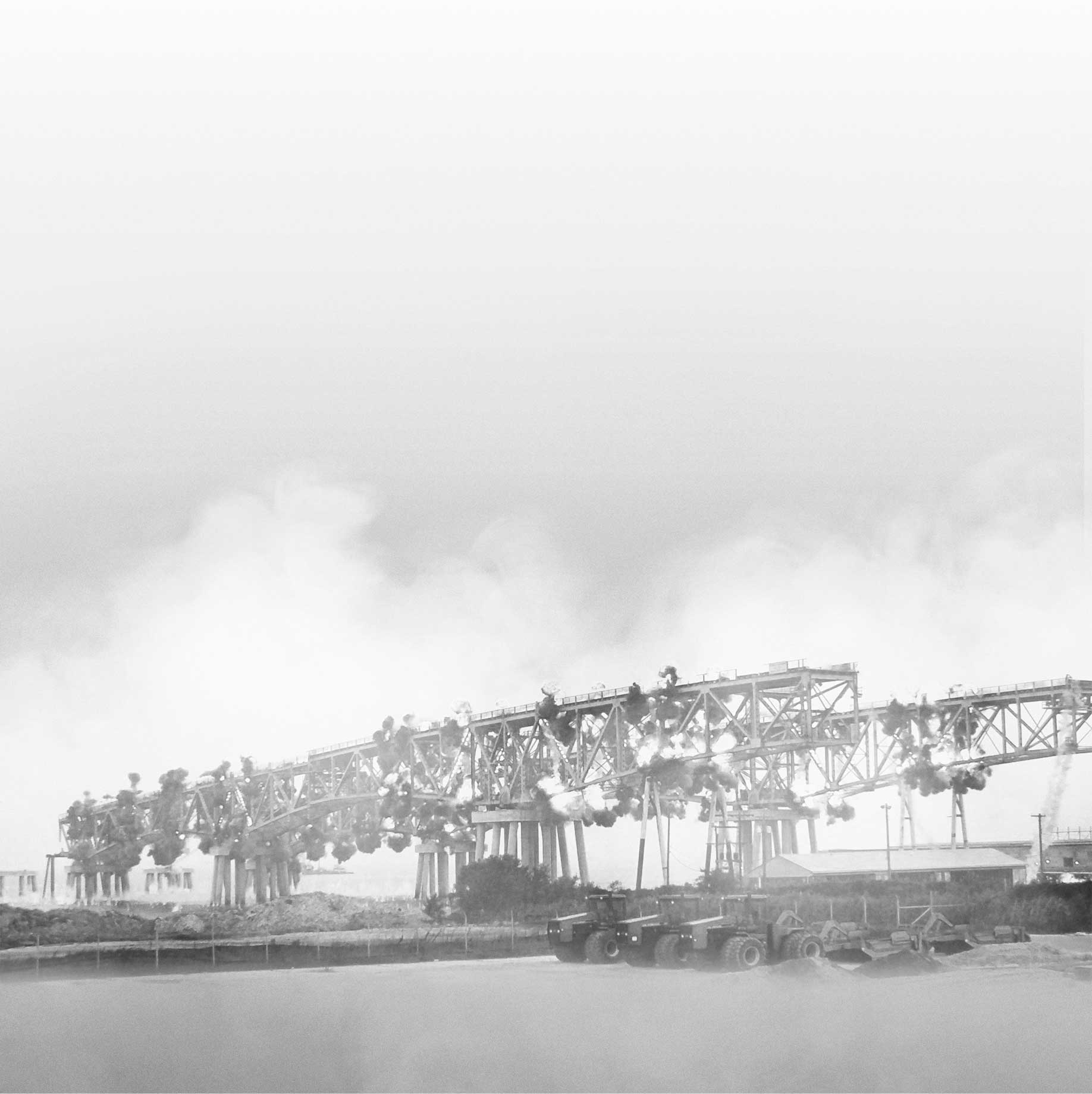Hunterson Wind Turbine & Radio Tower

CDI has been explosively felling wind turbines of various sizes and models since the 1980’s. Of the over 40 wind turbines we have felled, most were simply outmoded, while others suffered damage due to fire or mechanical failure.
PROJECT OUTLINE
In early 2019, Scottish & Southern Energy (SSE) appointed Keltbray Decommissioning (Keltbray) to perform a comparative risk and cost assessment for the removal of one (1) redundant, 177-meter (581’ tall), 3-blade, 6MW, T3 Siemens NG6 Wind Turbine and one (1), 108-meter (617’ tall) Communications Mast at the Hunterston National Offshore Wind Turbine Test Facility in the UK, immediately adjacent to the Hunterston Magnox and EDF Nuclear Facility.
Keltbray was asked to evaluate crane dismantling, (deconstructing the structures in reverse sequence to their original construction), felling by mechanical means (using a hydraulic jacking system to topple the structures), and energetic felling by the controlled use of explosives.
Keltbray was well experienced in the first two (2) options, but turned to CDI to provide design and pricing information on the latter method given CDI’s international experience in the shaped charge felling of structures, including wind turbines and communication towers at highly controlled sites.

While the preparations for and felling of the communications tower was fairly straight forward, with CDI designing simple bracing to create a reliable hinge to control the fall of the slender structure and use of USA-manufactured shaped charges to sever 5” diameter solid steel legs to topple the tower, the Siemens Wind Turbine was larger and more structurally robust than any other wind turbine ever felled with explosives. Although CDI had the technical capability of severing the 68.6-millimeter (2.7”) thick, 50 ksi steel barrel wall of the 100-meter (328’ tall) tower supporting the nacelle, the high winds at the Hunterston site and proximity of the Nuclear Facility, dictated that CDI provide a design that would allow for safety of preparations but detonate a lesser quantity of explosives to fell the Wind Turbine, rather than expose the adjacent Nuclear Facility to excessive peak air overpressure generated by a large quantity of explosives.
CDI’s preparation plan and fee for services was costed by Keltbray and it was determined that an energetic felling approach would be far more cost-effective than either dismantling or mechanical jacking methods, particularly given the likely delays and crane standby cost in the dismantling and mechanical methods due to unpredictable high winds at the Hunterston site. More importantly, it was abundantly clear to Keltbray and SSE that the short duration of exposure to personnel during preparation for and energetic felling created a fraction of the of risk to workmen, compared to other methods. SSE didn’t hesitate to approve the energetic felling method, first on mitigation of risk to workers, and second, on the basis of reduced cost.
THE DETONATION
It took Keltbray’s 4-man crew approximately eight (8) working days to prepare the structures to CDI’s specifications without ever compromising the stability of the structures. Explosives/protective cover were placed by CDI with the assistance of Keltbray’s crew in about 10 working hours.
The structures were safely felled, per plan, and vibration from the fall of the structures, and peak air overpressure from explosives detonation recorded at the nearby site office, much less at the Hunterston Nuclear Facility, were well below levels of concern to regulatory agencies.
Click HERE to watch the Hunterson Wind Turbine & Communication Tower implosion.

